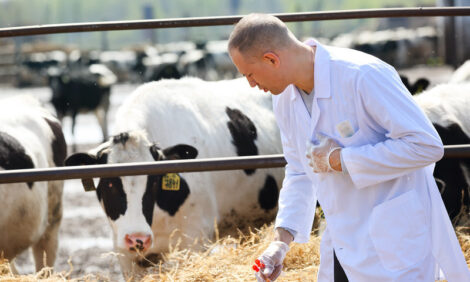



Consensus on Strong 2014 Dairy Demand
GLOBAL - World milk demand will remain robust throughout 2014 and stay supported by China’s rapidly expanding ‘wildcard’ market, say dairy markets experts.Furthermore, elevated farmgate prices will drive production as ‘mostly normal’ production conditions are predicted across key export areas.
This is according to a Rabobank agribusiness outlook which, along with several other dairy forecasts, predicts favourable domestic and export sales amid elevated farmgate prices for 2014.
However, Chinese and Russian production remains an enigma. Should decreases continue as they have been doing through 2013, then global prices will receive even more support, predicts Rabobank.
Exportable supply has been growing globally since September on the back of falling feed costs and rising producer margins, two reasons for US and New Zealand production to rise this year.
More moisture and a two per cent rise in calving US heifers in 2014 is the basis for more milk in these two important production regions.
The US Department of Agriculture anticipates a 2.2 per cent rise in milk output – this means 90.6 billion litres without any predicted yield increase.
In New Zealand, milk production is expected to lift eight per cent on the previous season.
Rabobank and DCANZ figures are based on a Fonterra milk price forecast of NZ$8.30/kg milk solids making extending lactations with supplementary feed a feasible proposition.
Lower feed costs are also important for US expectations.
In his outlook for the year, Professor Robert Cropp of the University of Wisconsin-Madison lists $4.31 per bushel corn and $187/ton hay as key feeds that are considerably lower than last year.
And while soybeans are slightly higher, this means returns over feed costs have improved greatly.
This will leave some regions with more milk, although the story is not totally straightforward.
“Forage quality could dampen increases in milk per cow in states like Wisconsin and Minnesota and extreme drought in California could affect their milk production,” said Professor Cropp. “But, we can expect cow numbers to increase as we move through the year and milk per cow to improve. This likely means milk prices averaging lower for the second half of the year than for the first half.
Furthermore, Cattlefax analysts at the NCBA convention last week said an El Nino would bring moisture to the US this year.
The weather outlook for Australasia is ‘mostly normal’. This is especially welcome news to Australian producers and North Island New Zealanders.
Some precipitation over Christmas and the New Year has alleviated North Island pasture concerns, although some areas remain dry.
Michael Priestley
News Team - Editor
Mainly production and market stories on ruminants sector. Works closely with sustainability consultants at FAI Farms



